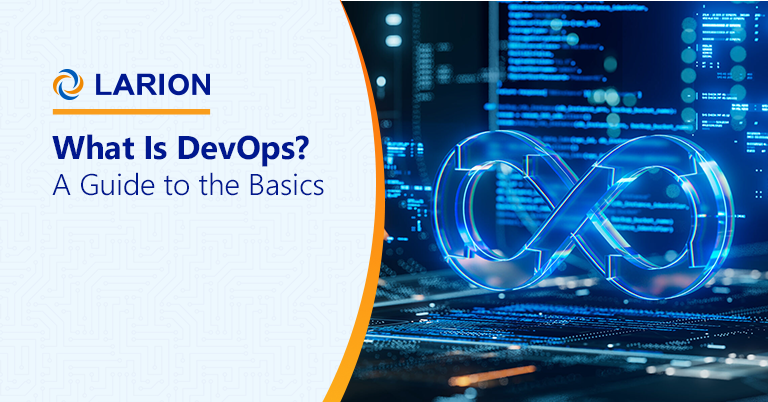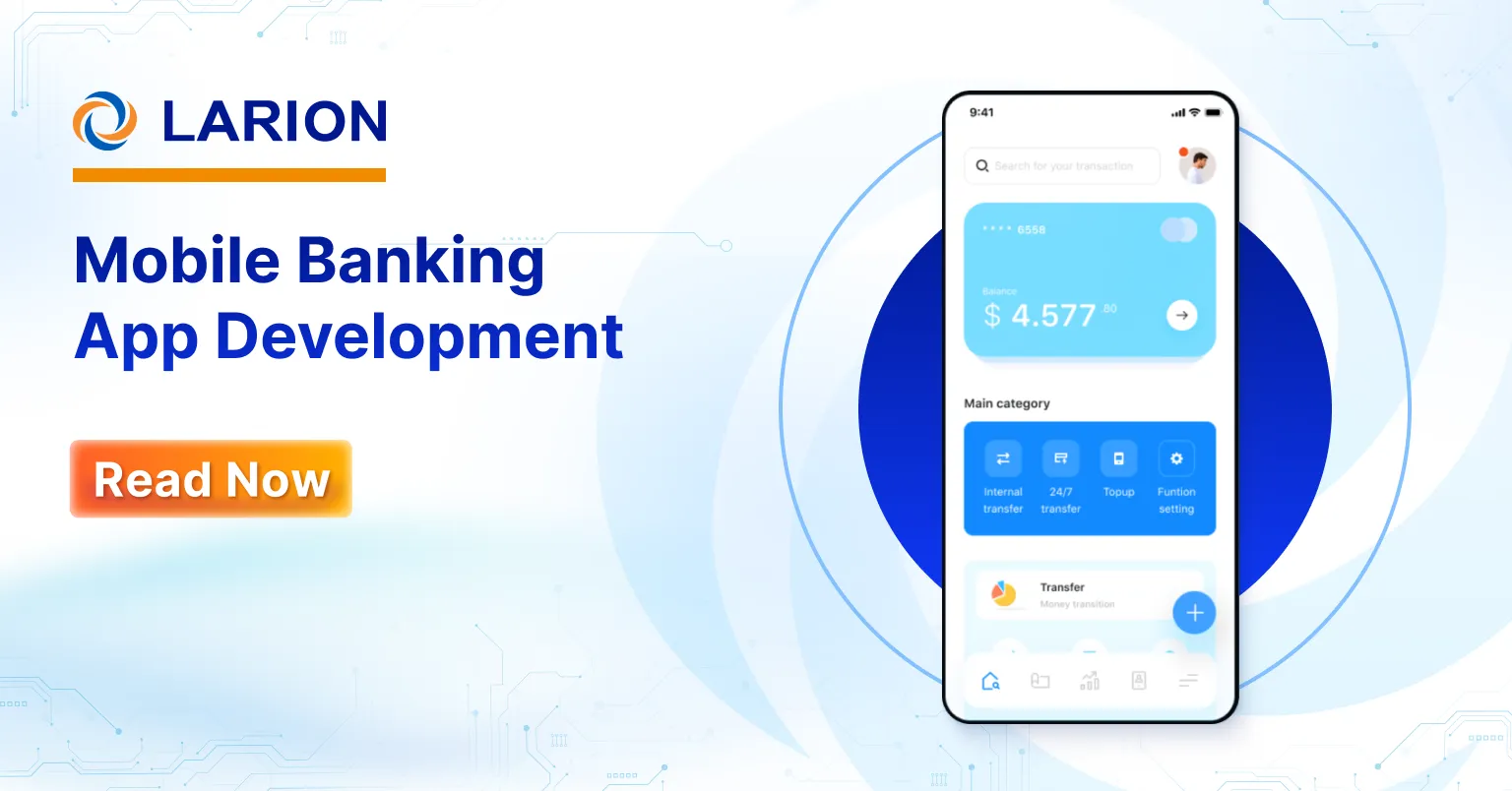
Dealing with obstacles related to siloed data, obsolete practices and development team competence, many companies are switching to DevOps to facilitate efficient development processes that meet the demands of a rapidly evolving market. In fact, according to the Harvard Business Review, 86% of organizations see the value of DevOps as important to have and over 80% of organizations now practice DevOps, as per Puppet.
But how does DevOps development operate and how to implement? The thing is, DevOps isn’t a one-size-fits-all process and can be adjusted to fit your team’s needs and goals, which can be quite confusing for those just starting to learn about the philosophy.
This article will provide a comprehensive overview of the process to help you define the appropriate framework for your project. Let’s get started!
What is DevOps mean?
As a combination of cultural philosophies, practices and tools, DevOps enables software development (dev) and operations (ops) teams to seamlessly collaborate for faster delivery via automation, quick feedback and iterative improvement. An effective DevOps team structure is key to this collaboration, typically involving cross-functional teams with shared responsibilities that align with business goals.
Building on Agile, lean practices, and systems theory, DevOps emphasizes incremental development and rapid software delivery. Success hinges on fostering a culture of accountability, enhanced collaboration, empathy, and shared responsibility for business outcomes.
What are the benefits of DevOps?

Embracing a DevOps culture offers several advantages to an organization, particularly in enhancing operational efficiency, accelerating feature delivery, and elevating product quality. The 4 primary benefits include:
Accelerated time-to-market
By facilitating increased collaboration and frequent releases, the DevOps team can deliver faster code. According to DORA, high-performing DevOps teams can deploy code 30 times more frequently with 20 times faster lead times for changes compared to lower performers. With quicker launches of new features and faster bug fixes, companies can better address customer needs and gain competitive advantages.
Greater quality & reliability
Leveraging CI/CD practices, DevOps development allows real-time monitoring and logging to verify performance, ensuring changes are both functional and secure
Enhanced collaboration
Promoting a culture of shared responsibility and transparency between development and operations teams, DevOps enhances efficiency and saves time on work handoffs while developing code suitable to the environment in which it operates.
Improved security
By integrating security checks throughout the development pipeline (“shift left” approach), DevOps helps identify and fix vulnerabilities earlier in the development lifecycle. This significantly reduces the attack surface and the risk of security breaches. A GitLab study found that 72% of security professionals rated their organization’s security efforts as “good” or “strong” after adopting DevSecOps practices.
What is involved in the DevOps lifecycle?

The DevOps lifecycle encompasses 8 phases that represent the processes, capabilities, and tools essential for both development (on the left side) and operations (on the right side). Teams collaborate and communicate throughout each stage to ensure alignment, maintain velocity, and uphold quality.
1. Planning
In this workflow, teams outline new features and functions for the upcoming release based on prioritized user feedback, case studies, and input from all internal stakeholders. The aim of the planning stage is to maximize the product’s business value by creating a backlog of features that enhance its overall value.
2. Coding
At this step of DevOps cycle, developers focus on coding and building new and improved features based on user stories and backlog items. They typically use their local workstations to write and test code in an iterative process before integrating it into the continuous delivery pipeline.
3. Building continuous integration and continuous delivery
In this phase, new code is integrated into the existing codebase, tested, and prepared for release and deployment. Automation tasks typically involve merging code changes into the master branch, verifying code from the source repository, and automating the compilation, unit testing, and packaging into an executable file. A best practice is to store the output of the continuous integration (CI) phase in a binary repository for use in the next phase.
4. Testing
DevOps development has evolved to integrate various testing elements across its entire cycle. During planning, behavior-driven development (BDD) is utilized. In the development stage, unit testing and contract testing are conducted. Integration involves static code scans, CVE scans, and linting. Deployment includes smoke testing, penetration testing, and configuration testing. Operations encompass chaos testing and compliance testing, while the learning phase involves A/B testing.
5. Release
In this workflow, the build output from the integration phase is deployed to a runtime environment, typically a development environment, where runtime tests for quality, compliance, and security are conducted.
If errors or defects are identified, developers can intercept and remediate the issues before they reach users. The workflow typically includes separate environments for development, testing, and production, each with increasingly stringent quality gates. Once developers resolve all identified issues and the application meets all requirements, the operations team confirms its readiness for deployment and promotes it to the production environment.
6. Deploy
Deployment occurs when the project is moved to a production environment, allowing users to access the application changes. During this phase, infrastructure is set up and configured, often using infrastructure as code, and the application code is deployed. A best practice for deploying to a production environment is to initially deploy to a subset of end users. Once stability is confirmed, the deployment is gradually rolled out to all users.
7. Operate
During this stage of DevOps lifecyle, teams ensure that features are operating smoothly and without service interruptions. They verify the health of the network, storage, platform, compute resources, and security measures. If issues arise, the operations teams identify the incident, notify the appropriate personnel, troubleshoot the problems, and implement fixes.
8. Monitor
This final phase involves gathering feedback from users and customers regarding features, functionality, performance, and business value to inform the planning of enhancements and new features for the next release. It also includes reviewing any learnings and backlog items from operations activities, which can help developers proactively prevent known incidents from recurring. This is where the process “wraps around” to the planning phase, driving continuous improvement.
Read more: Strategic DevOps Implementation: Roadmap & Readiness Assessment
What’s in the DevOps toolchain?
Having a well-organized DevOps tool list can be crucial for streamlining processes and enhancing efficiency.

Project management tools
Project management tools help teams create a backlog of user stories or requirements that become coding projects by breaking down projects into smaller tasks and monitor their progress until completion. Many of these tools support agile methodologies like Scrum, Lean, and Kanban, which are commonly used in DevOps. Popular open-source choices include GitHub Issues and Jira.
Source code repository
Version-controlled coding environments allow multiple developers to collaborate on the same codebase. Code repositories need to integrate with CI/CD, testing, and security tools, ensuring that code committed to the repository automatically progresses to the next step in the pipeline. Open-source code repositories such as GitHub and GitLab are popular choices for these purposes.
CI/CD pipelines
These tools automate tasks such as code checkout, building, testing, and deployment and generally fall into two main categories: open-source and cloud-based. For on-premises control, Jenkins is favored for its flexibility, while OpenShift Pipelines is ideal for Kubernetes environments. For those preferring cloud-based solutions, CircleCI is popular for its scalability, and platforms like Azure DevOps and AWS CodePipeline offer comprehensive features that integrate CI/CD with project management.
Test automation frameworks
These encompass software tools, libraries, and best practices designed to automate various types of tests. Consider tools that support multiple programming languages, with some even using AI to automatically adjust tests based on code changes. Popular open-source options include Selenium, Appium, Katalon, and Tricentis Tosca.
Configuration management
Configuration management tools (also referred to as infrastructure as code tools) allow DevOps engineers to configure and provision infrastructure that is fully versioned and documented through the execution of scripts. Open-source options in this category include Ansible, Chef, Puppet, and Terraform. For containerized applications, Kubernetes provides similar capabilities.
Monitoring tools
Monitoring tools assist DevOps teams in detecting and addressing system issues. They also collect and analyze data in real-time to show how code changes affect application performance. Popular open-source monitoring tools include Datadog, Nagios, Prometheus, and Splunk.
Continuous feedback
These tools collect feedback from users through methods such as heat mapping (tracking user actions on the screen), surveys, or self-service issue ticketing.
6 DevOps principles for the best adoption
Continuous integration
Continuous integration is a practice where developers frequently merge their code changes into a central repository, where builds and tests are automatically performed. The primary aims are to quickly identify and fix bugs, enhance software quality, and shorten the time needed to validate and release new updates.
Continuous delivery
Continuous delivery automates the process of building, testing, and preparing code changes for production release. Expanding on continuous integration, it deploys all code changes to a testing and/or production environment after the build phase. With effective continuous delivery, developers always have a deployment-ready build artifact that has undergone a standardized testing process.
Infrastructure as Code (IaC)
Regardless of whether your organization operates with an on-premise data center or is fully cloud-based, the ability to quickly and consistently provision, configure, and manage infrastructure is crucial for successful DevOps adoption. IaC extends beyond basic scripting of infrastructure configuration by treating infrastructure definitions as code. This approach involves using source control, code reviews, testing, and other practices associated with coding
Microservices
Microservices is an architectural approach where an application is designed as a set of smaller, independent services that can be deployed and operated separately. Each service manages its own processes and interacts with other services through an interface. This separation of concerns and independence supports DevOps practices such as continuous delivery and continuous integration.
Monitoring
By capturing, categorizing, and analyzing data and logs from applications and infrastructure, organizations can understand the impact of changes or updates on users and gain insights into the root causes of issues or unexpected changes. This enables teams to “shift left” by addressing potential issues earlier in the development process, thereby reducing the occurrence of problematic changes in production.
Communication & collaboration
Enhanced communication and collaboration is a fundamental cultural element of DevOps development. Teams should establish robust cultural norms for information sharing and communication through chat applications, issue-tracking systems, and wikis. This approach accelerates communication among developers, operations, and other departments such as marketing and sales, helping align all parts of the organization more closely with shared goals and projects.
What are key DevOps challenges in adoption?
While DevOps promises faster development cycles, improved collaboration, and higher quality software, implementing it isn’t always smooth sailing. Here are some of the critical DevOps challenges:
Cultural shift
Shifting to a DevOps culture often meets resistance from teams accustomed to traditional, siloed workflows. Overcoming entrenched habits and fostering collaboration between development and operations can be difficult.
Skill gaps
Implementing DevOps requires a diverse set of skills, including expertise in automation, CI/CD, and IaC tools. Finding or developing team members with these skills can be a challenge.
Legacy systems
Existing legacy systems and infrastructure may not be easily compatible with modern DevOps practices. Updating or integrating these systems can be time-consuming and costly.
Tool overload
The wide variety of available DevOps tools can lead to confusion and tool sprawl. Choosing the right tools and avoiding unnecessary complexity is essential.
DevOps vs DevSecOps: What’s the Difference?
Kickstart Your DevOps Journey with LARION
With the article providing an overview of DevOps, its benefits, toolchain, and practices, you now should have a solid understanding of the philosophy.
While it may be tempting to swiftly implement DevOps development by hiring experts and deploying technologies, there are no shortcuts to a successful transition. Adopting DevOps requires significant changes, including process adjustments, new tools, and evolving team dynamics, all of which demand effective change management strategies to minimize disruptions. This transition can be particularly challenging for companies just beginning to explore DevOps.
If you need expert guidance on building a DevOps team, consider partnering with experienced tech experts who can help you navigate the transformation. With over 20 years of experience, LARION has successfully assisted numerous companies of all sizes in crafting customized transition plans. Contact us today to achieve seamless integration of DevOps practices tailored to your specific needs.





